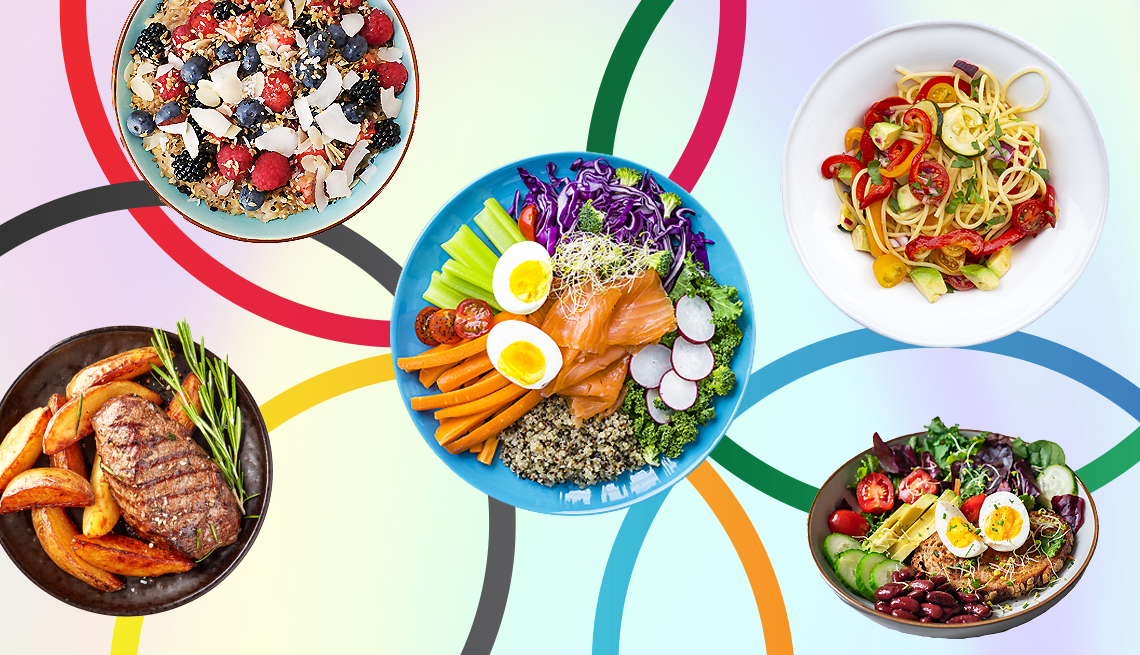
- Select a language for the TTS:
- UK English Female
- UK English Male
- US English Female
- US English Male
- Australian Female
- Australian Male
- Language selected: (auto detect) - EN
Play all audios:
The last time cyclist Dotsie Bausch went to the Olympics, she made history by becoming the oldest competitor in her discipline to medal. That was back at the London Games in 2012, when
Bausch was 39. This year, at age 51, Bausch returned to the Olympics to have a different kind of fun. She and her husband are in Paris to cheer on the Americans, drink wine by the Seine and
“just not worry about a thing,” Bausch told AARP the night before her departure. But while plenty has changed for Bausch in the intervening years, diet isn’t one of them. Sure, she’s
consuming fewer calories than when she was grinding through three workouts a day, but the basics — namely, consuming a whole-foods, plant-based diet — have remained the same. “People think
that athletes and Olympians or whoever might be at a really high level of their sport eat this supersecret, crazy food that they’ve never heard of,” says Bausch, the executive director of
the nonprofit Switch4Good, which encourages people to ditch dairy products. In reality, she continued, top-tier athletes just eat more. So if you’re inspired by the competitors in this
years’ Olympic Games, you, too, can eat like them — just, most likely, less. Here’s how. 1. PRIORITIZE PLANTS This year’s games aim to be the most sustainable and vegetarian-friendly yet,
with plant-based meals and snacks making up 60 percent of the offerings for the general public. Organizers also say 80 percent of all food is made from seasonal, local ingredients. “This
is the first Olympics that finally said, ‘We can’t ignore the science anymore about what animal agriculture is doing to our planet,’” says Bausch, who worked with some of this year’s
caterers to develop flyers comparing the nutrient content of plant-based milks with cow’s milk. Nonathletes watching from home can benefit from emphasizing plant foods, too, even if you
don’t go all-out vegan or vegetarian, says Kelly Jones, a sports dietitian and former Division 1 swimmer who works with professional athletes and active families alike. “The more plant foods
on your plate you have, especially in the whole form, the more antioxidants you’re gonna get,” she says. “And we know that those antioxidants we talk about for supporting disease prevention
and longevity … also support exercise recovery. So that is another way that an athlete plate can look similar to the plate of an older adult.” 2. CHOOSE QUALITY CARBS There’s arguably no
better place to carbo-load than Paris, with its signature croissants, baguettes and crepes. And while Olympians will surely be indulging on local delicacies for some of their carbohydrate
needs, they’ll also be prioritizing high-quality carbs like whole grains, sweet potatoes, beans and lentils, Jones says. Older adults should take note, since carbs are the primary fuel
source for both the muscles and the brain, Jones says. Just opt for potatoes over pastries most days of the week.








